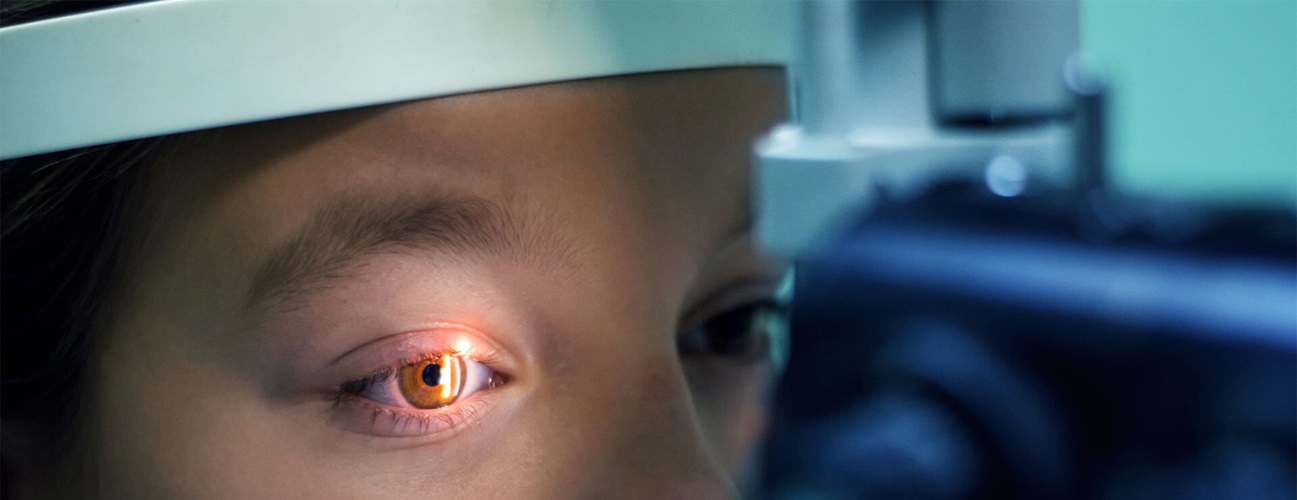Marfan Syndrome and Your Child’s Eyes: What You Need to Know
Featured Expert
Symptoms for Marfan syndrome, a rare genetic disorder, can develop in the first year or two of life or may develop much more gradually. Vision problems often can be the first sign because of the importance of connective tissue in the developing eye.
Pediatric ophthalmologist Jefferson James Doyle, M.D., Ph.D., M.H.S., explains what you should know about Marfan syndrome and childhood vision problems.
Symptoms of Marfan Syndrome in the Eye
Ectopia lentis — a condition in which the lens dislocates within the eye — appears in 70-80% of patients with Marfan syndrome and is a key indicator for early diagnosis of the disorder. Ectopia lentis typically results in a number of eye conditions, including:
- Myopia
- Astigmatism
- Reduced vision that may or may not be correctable by glasses
As with most vision problems, it is best to seek care as soon as you notice changes, especially if your child seems to have trouble seeing.
Other eye conditions that may result from an underlying Marfan syndrome diagnosis include:
- Corneas that are thinner and flatter than normal
- Irises that are very flat (cryptless), do not dilate well or are very floppy (iridodonesis)
- Early onset cataracts
- Glaucoma
- Strabismus
- Retinal detachment
- Amblyopia
Diagnosing Marfan Syndrome in a Child
Marfan syndrome can be apparent from as early as infancy. When an eye-care specialist screens a child for eye problems possibly caused by the disorder, the patient’s age will determine the approach.
With younger patients, an eye-care specialist may use more simple tests to determine visual acuity, such as a preferential looking test (PLT) or Allen cards. As children get older and are able to recognize letters, your specialist may use HOTV testing or the Snellen letter chart you see at most eye exams. As a substitute for a regular slit-lamp eye exam, a pediatric ophthalmologist may use a portable slit-lamp device.
To diagnose Marfan syndrome in older children, an eye-care specialist will typically conduct a slit-lamp exam. This requires dilation of the eye with drops to make the pupils wide enough for a doctor to see the inner eye. While the patient rests their head on a chin rest, the doctor will use a microscope with a bright beam of light to examine the eye for any irregularities. The examination is painless, but requires the patient to sit still for a minute or two.
If a dislocated lens is found, an ophthalmologist may refer your child to other specialists for additional testing and recommend a review of family medical history to confirm a Marfan syndrome diagnosis. Echocardiograms and genetic testing are typically the next diagnostic step if Marfan syndrome is suspected.
Marfan Syndrome’s Effect on a Child’s Eyes
Marfan syndrome is a genetic disease with no known cure. However, eye conditions caused by Marfan syndrome can be treated to manage symptoms and improve quality of life. Early diagnosis of Marfan syndrome can ensure that your child receives the right care. Vision issues caused by dislocated lenses can often be resolved with glasses, although surgery is sometimes required. More mild cases of myopia and astigmatism can typically be treated with prescription glasses or contact lenses.
The Wilmer Eye Institute

Providing state-of-the-art eye care across nine locations in Maryland, the Wilmer Eye Institute offers specialized diagnosis and management of a wide range of eye conditions.







